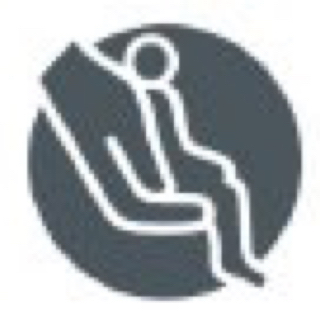Information
-
Assessment number (initials/month/year)
-
Area
- Building 81 - first and ground floor offices, toilets and meeting rooms
- Building 81 - Rail track production area
- Building 82 - pack assembly area , kitchen, toilets,warehouse manager's office/training room
- Building 82 - Reception, showroom, signing in book and toilets
- Building 82 - despatch, export packing, marketing mezzanine floor area, live storage area B outside QC
- Building 82 - first floor offices, toilets and kitchen
- Building 82 - goods inwards
- Building 84 - all bays, offices, test area, kitchen, toilets and meeting rooms
-
Conducted by
-
Conducted on
Fire hazards and sources of heat
1. Combustible Materials and Sources of ignition
-
Guidance:
Look for evidence of flammable materials, such a LPG, cardboard, paper, oils, solvents, sprays etc stored and use in the area. Identify the quantities of substances to determine if the amounts indicate that the control systems are not operating effectively.
Also look for excessive dust in the atmosphere which can be an explosion risk. Look for lead/acid battery charging taking place in the area. This can cause explosion risk due to gases produced.
If explosive atmospheres are noted, then identify the requirement for a carrying out a DSEAR assessment in the actions. Look for the potential for generation of static electricity which could ignite such explosive atmospheres.
Look for potential for ignition of combustible materials such as such as heaters being too close to combustible materials. Also check how flammable materials are stored to ensure they are stored safely (for example, locked metal cabinets) -
Are there flammable liquids, substances, or gases in the area being audited? (Photograph and list substances as necessary)
-
Are quantities of combustable waste allowed to accumulate in the area being audited? (Photograph and describe as necessary)
-
Are there any of the following present ?
- Cardboard (Boxes)
- Plastic Bags
- Wood (Pallets)
- Shrink Wrap
- Paper
- Plastic (components)
- Other
-
Please specify what the other combustable materials are
-
Are combustible materials stored away from sources of heat, and are amounts kept to a minimum?
-
Is there accumulated rubbish, waste paper, or other materials in the workplace?
-
Is there any evidence of smoking in the workplace outside of the designated areas? Are people using and charging e-cigarettes in the building or close to the building?
2. Electrical hazards
-
Guidance:
Look for signs of electrical arcing on cables, plugs and contactors, blocked cooling systems, badly positioned heaters, overloaded electrical outlets etc. Check also for damage to heater band cables and other supply cables which could catch fire if shorted out.
Beware of coiled extension leads and supply cables which, when drawing power will overheat and catch fire. Also look at how cables are run to minimise the risk of damage/shorting -
Is all electrical equipment in good condition? (Look for signs of burning on sockets, coiled or damaged cables etc)
-
Is all portable electrical equipment PAT tested?
-
Is all electrical equipment turned off when not in use? (Heaters, Chargers, etc)
Means of Escape
3. Obstructions to means of escape
-
Guidance:
Look for evidence of obstructed or blocked stairs, fire escapes, and routes to fire exits (including the final exit door). For example, check for cables potentially causing trip hazards, storage of finished product, or components or equipment restricting access to escape routes. Are all escapes unlocked?
Is it clear where the fire exits are? are they signed and well lit?.
Look for evidence of internal fire doors being propped open. Internal fire doors can be open if there is a mechanism to shut them automatically in the event of fire. Fire doors should open in the direction of travel. -
Are all gangways, stairs, and other escape routes free from trip hazards and obstruction? (Describe/photograph)
4. Visibility and Function of fire escape routes
-
Are all internal fire doors closed? Do self closing mechanism's work if fitted?
-
Are all final exit doors unlocked and able to be opened from inside?
-
Are all fire escape routes well signed and well lit?
Persons at risk and arrangements
5. Persons at risk
-
Guidance:
Look for missing signs/notices etc. Would it be clear to visitors, contractors, or other persons what action to take in the event of fire? -
Are there sufficient notices and signs displayed to show the action to be taken in the event of fire?
-
Are all employees able to evacuate the premises without assistance?
Fire safety arrangements
6. Fire safety arrangements
-
Are alarm call points clearly visible and unobstructed?
-
Has all fire fighting equipment been inspected and serviced (annual)?
-
Are all fire extinguishers in place and easily accessible? (check against zone map)
-
Are all fire extinguishers in zone: fixed to the wall or suitably located, free from damage, unused and and in date?
-
Has emergency lighting been checked as functional?
Actions
-
Actions required
Action:
-
Action required:
-
Responsibility
-
Assessor - Print and sign









